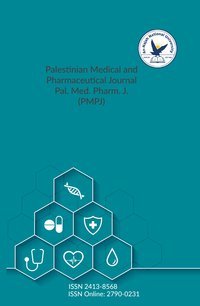The potency of erythrocytes investigation in revealing anti-A and anti-B antibodies absorbing and agglutinating epitopes
Authors:
Article info
2023-07-08
2023-01-10
321 - 336
Keywords
- Determination
- Antibody
- Diameter
- Erythrocyte
- Antigen
Abstract
Different methods of erythrocyte antigens detection exist in hematology. However, weak variants of blood group antigens are still difficult to reveal. The study aimed to determine erythrocytes' diameter after the specific incubation of O, A, B, and O-washed erythrocytes with anti-A, anti-B antibody absorbing ability with IgM and IgG complement-dependent anti-bodies. Thus, the contact of anti-A serum with A erythrocytes at 20 °C resulted in an increase of their diameter (from 6.19±0.55 μm to 6.28±1.48μm, from 5.41±0.71 μm to 6.02±1.2 μm) with a less increase of erythrocytes diameter in a less titer (1:2) of the serum. A similar in-crease in erythrocyte diameter was observed in A.B. erythrocytes after contact with anti-A, B serum for one-day incubation. At the same time, the contact of anti-B serum with A erythro-cytes did not increase erythrocyte diameter. At 37°C the contact of anti-A serum and A eryth-rocytes for 1-day incubation resulted in a less increase of erythrocytes diameter (5.27±1.5 μm) as compared to the one observed at 20°C. IgG antibodies increased the diameter of erythrocytes more significantly than IgM antibodies. Incubation of IgG antibodies with com-plement at 4°C leads to the hemolysis of erythrocytes of the appropriate specificity. The he-molyzing activity of the complement was decreased in the alkaline medium at 37°C and ap-peared to be highest in the acid medium at 4°C. Fenbendazole decreased erythrocytes' anti-A antibody absorbing ability, whereas itraconazole interfered with anti-B antibody absorbing ability. The presence of the serum from the person with additional absorbing antigens led to less hemolyzing activity of the complement and increased the number of erythrocytes in the case of the specific antigen-antibody binding. Therefore, evaluating the erythrocytes' diame-ter after contact with IgG complement-dependent antibodies at 20°C may be applied to de-termine the type of blood group antigens.
The potency of erythrocytes investigation in revealing anti-A and anti-B antibodies absorbing and agglutinating epitopes
المؤلفون:
معلومات المقال
2023-07-08
2023-01-10
321 - 336
الكلمات الإفتتاحية
- Determination
- Antibody
- Diameter
- Erythrocyte
- Antigen
الملخص
Different methods of erythrocyte antigens detection exist in hematology. However, weak variants of blood group antigens are still difficult to reveal. The study aimed to determine erythrocytes' diameter after the specific incubation of O, A, B, and O-washed erythrocytes with anti-A, anti-B antibody absorbing ability with IgM and IgG complement-dependent anti-bodies. Thus, the contact of anti-A serum with A erythrocytes at 20 °C resulted in an increase of their diameter (from 6.19±0.55 μm to 6.28±1.48μm, from 5.41±0.71 μm to 6.02±1.2 μm) with a less increase of erythrocytes diameter in a less titer (1:2) of the serum. A similar in-crease in erythrocyte diameter was observed in A.B. erythrocytes after contact with anti-A, B serum for one-day incubation. At the same time, the contact of anti-B serum with A erythro-cytes did not increase erythrocyte diameter. At 37°C the contact of anti-A serum and A eryth-rocytes for 1-day incubation resulted in a less increase of erythrocytes diameter (5.27±1.5 μm) as compared to the one observed at 20°C. IgG antibodies increased the diameter of erythrocytes more significantly than IgM antibodies. Incubation of IgG antibodies with com-plement at 4°C leads to the hemolysis of erythrocytes of the appropriate specificity. The he-molyzing activity of the complement was decreased in the alkaline medium at 37°C and ap-peared to be highest in the acid medium at 4°C. Fenbendazole decreased erythrocytes' anti-A antibody absorbing ability, whereas itraconazole interfered with anti-B antibody absorbing ability. The presence of the serum from the person with additional absorbing antigens led to less hemolyzing activity of the complement and increased the number of erythrocytes in the case of the specific antigen-antibody binding. Therefore, evaluating the erythrocytes' diame-ter after contact with IgG complement-dependent antibodies at 20°C may be applied to de-termine the type of blood group antigens.
An-Najah National University
Nablus, Palestine
Nablus, Palestine
- P.O. Box
- 7, 707
- Fax
- (970)(9)2345982
- Tel.
- (970)(9)2345560
- (970)(9)2345113/5/6/7-Ext. 2628
- [email protected]
- EIC
- Prof. Ismail Warad
